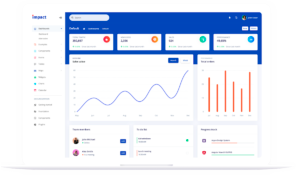Productivity methods
8 min read
On this page
The modern workplace with its complexity and people wearing different hats at work & home has made it challenging to stay focused and productive. We created this blog post about popular productivity methods to help you efficiently navigate your work and personal life.
There are many productivity methods, but there is not one that fits everyone’s needs. So finding one that fits what you need and your work style becomes critical. In this blog we explore different productivity methods, when to use them, how to use them and the tool sets you would need to get maximum benefits.
Happy exploring – Hope you find the method that fits you!

Getting Things Done (GTD)
This productivity and time management system developed by David Allen is focused on completing tasks in a stress free and efficient manner by using comprehensive lists and calendars.
When to use:
- When you have a lot of tasks to keep track of
- When you have a variety of tasks or wear different hats in your job
- When your tasks include details difficult to keep track of
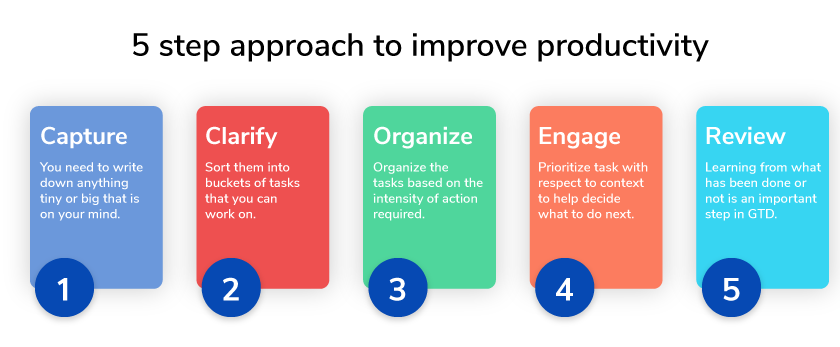
How to use:
This technique uses a 5-step approach to improve productivity:
- Capture – You need to note down anything tiny or big that is on your mind. You can note them down on paper or digitally. I recommend using Evernote, Sharepoint, or Outlook if you want to take digital notes. Just remember, nothing is too small.
- Clarify – Once you have the tasks organized the way you can access it, sort them into buckets of tasks that you can work on, archived or not for today. This helps with gaining focus on what’s on your plate for today.
- Organize – Organize the tasks based on the intensity of action required. Multiple action points blocked or waiting for next action points – this will help with getting a hold of what can be done next.
- Engage – What task to handle next is always where we get stuck most often. Getting the context of a task such as is it a work, home or kids project helps establish a priority of the task. Priority of a task with respect to context help you decide on what to do next. Time and energy available for you to take up tasks each day needs to be factored in to make sure it doesn’t add to stress.
- Review – Learning from what has been done or not is an important step in GTD. End of the week reviewing or reflecting on how efficiently and how many tasks were you able to knock out or how better you can organize adds a crucial step of improvement to GTD.
Tool sets to use:
- Evernote
- Sharepoint
- Outlook
- Physical files and trays
- Notebook
Pomodoro
This technique quite literally gamifies your productivity to fetch your rewards! Francesco Cirillo developed this method to help him study and stay focused for his exams. He used a tomato (Pomodoro in Italian) shaped timer and hence the name.
When to use:
- When you easily get distracted
- If you enjoy playing games and reaping rewards
- When you have a lot more to do than you expect
How to use:
This method yields the best results when there is some homework done.
- A bigger project needs to be broken down into chunks you can complete in 25 minutes
- Group small tasks together
- Once Pomodoro is set, it must ring
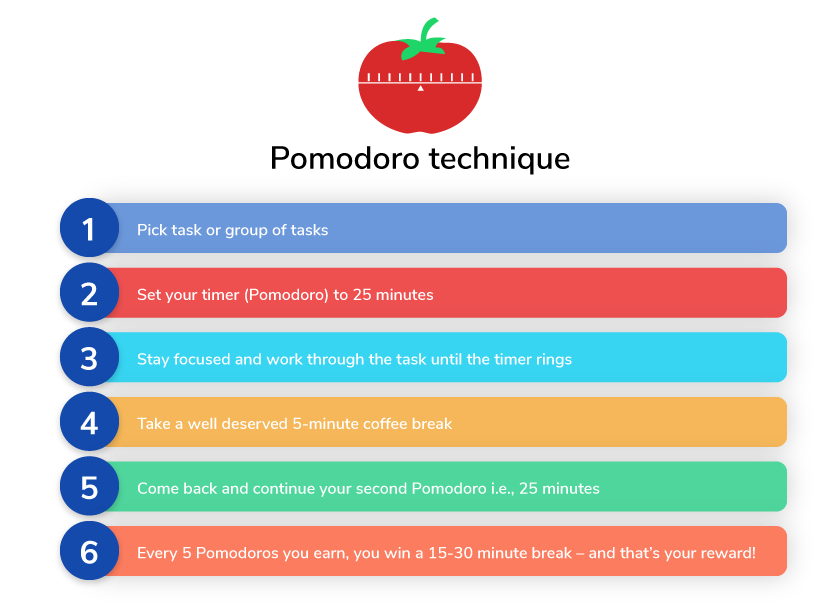
Once your groundwork is done, you can put the method to use:
- Pick task or group of tasks
- Set your timer (Pomodoro) to 25 minutes
- Stay focused and work through the task until the timer rings
- Take a well deserved 5-minute coffee break
- Come back and continue your second Pomodoro i.e., 25 minutes
- Every 5 Pomodoros you earn, you win a 15-30 minute break – and that’s your reward!
Tool set to use:
- A loud timer than can be heard easily
- A tally board to keep track of the number of Pomodoros you earn
Eisenhower Matrix
This productivity technique has been proven multiple times in the history of America – be it construction of Interstate Highway System, creating NASA or including Alaska/Hawaii into US, this method has always worked. Used by 34th president of USA Dwight D. Eisenhower and documented by Stephen Covey, this method has also come to be known as Time Management Matrix.
When to use:
- When you end up playing whack a mole often
- Don’t see the impact of your work
- Cannot delegate or say no to tasks easily
How to use:
It is critical to understand two terms to use this method.
- Urgent – These are tasks that need immediate action. Though these are unavoidable, making sure that you don’t spend a lot of time on these is important to reduce stress.
- Important – These are tasks that contribute to long term success and help achieve a bigger vision. Such tasks help with focusing energy and time on overall long-term vision.
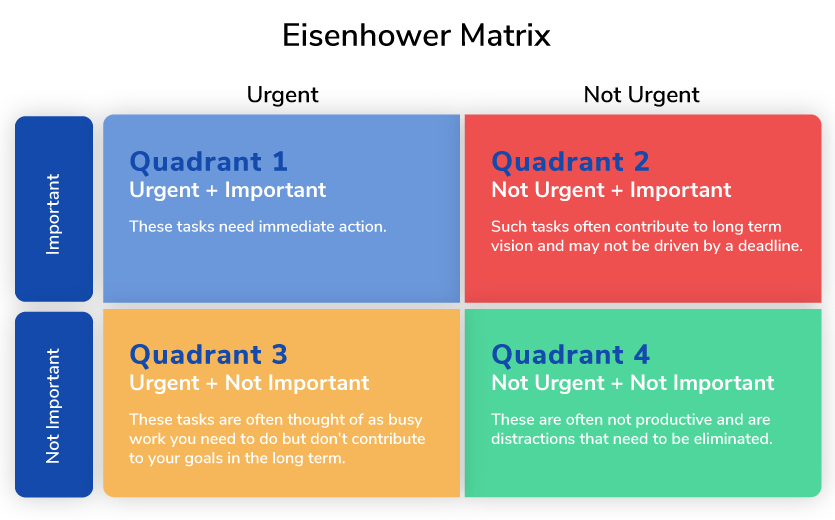
The matrix can be divided into four quadrants:
- Quadrant 1 – Urgent + Important – These tasks need immediate action. These are often driven by a deadline and are deemed critical. Such tasks might often come as a surprise to upset your schedule, but need to be catered immediately.
- Quadrant 2 – Not Urgent + Important – Such tasks often contribute to long term vision and may not be driven by a deadline. They need to be scheduled on your calendar and needs to be revisited to cross check in which quadrant they like. A few examples might include learning a new skill, investing time with your friends and family.
- Quadrant 3 – Urgent + Not important – These tasks are often thought of as busy work you need to do but don’t contribute to your goals in the long term. You should delegate such tasks and complete them to keep the wheels running. These tasks often include running reports or routine meetings.
- Quadrant 4 – Not Urgent + Not Important – These are often not productive and are distractions that need to be eliminated. These include spending time on social media, watching TV etc.,
For this technique to be effective, having a right balance of tasks spread across these 4 quadrants is important.
Tools to use:
- Evernote
- Notebook
Objective & Key Results (OKRs)
OKRs is a goal setting framework used by multi-national corporations such as Google, Disney, IBM etc., This method helps drive results because of the data driven metrics that are defined to measure and track goals. OKR evangelist John Doerr has defined some standard OKRs and KPIs that help measure both teams and individuals.
When to use:
- Your performance is driven by data reported
- When challenging yourself to go beyond what is just expected
- Align personal goals with the team and company goals.
How to use:
A few terms to understand for this method to work effectively.
- Objectives – This is the destination or where you want to reach
- Key Results – This is the path that defines how to get to the destination
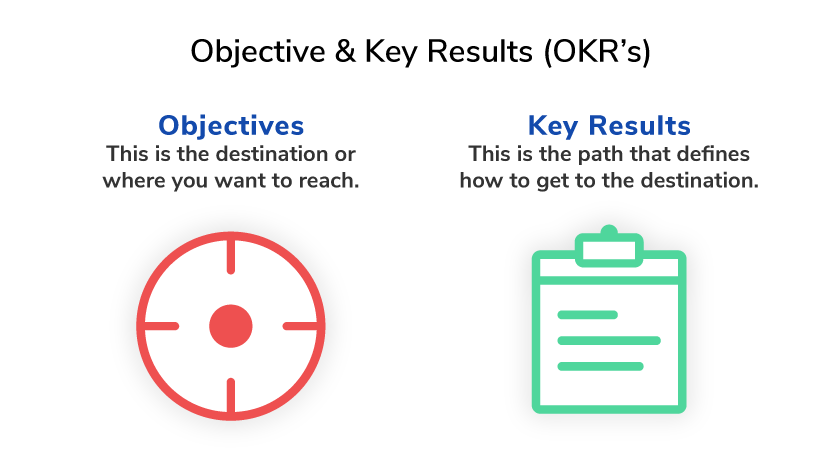
Defining Objectives and Key results are the meat of this method. How well these are set and achieved defines the effectiveness of this method.
- Objectives are defined
- To describe what is being accomplished
- Are not factored by time i.e., quarter, yearly etc.,
- Are action oriented and concrete
- Contribute to the overall long term goal or vision
- Key Results are defined
- Defining a path to get to the goal
- Time bound action that can be evaluated at the end of the cycle
- Need to be measurable
- Are evaluated repeatedly to learn from
A few examples of OKR can be a website redesign project.
Objective – Redesign the web portal for Hivedesk to look modern
Key Results – Develop mockups, narrow down on theme to use, Review and evaluate the new design, Develop newly designed website
Tools to use:
- Gantt Charts
- KPI Dashboards
Time Blocking
This productivity technique is focused on bringing structure into your daily routine and hence enhances the capability to knock out tasks. There are multiple variations of this technique such as time batching, day blocking etc. These revolve around the idea of dividing the day into chunks of time to focus on tasks.
When to use:
- Have multiple responsibilities
- Spend time on answering emails or messages
- Have many meetings per day that eat up your time
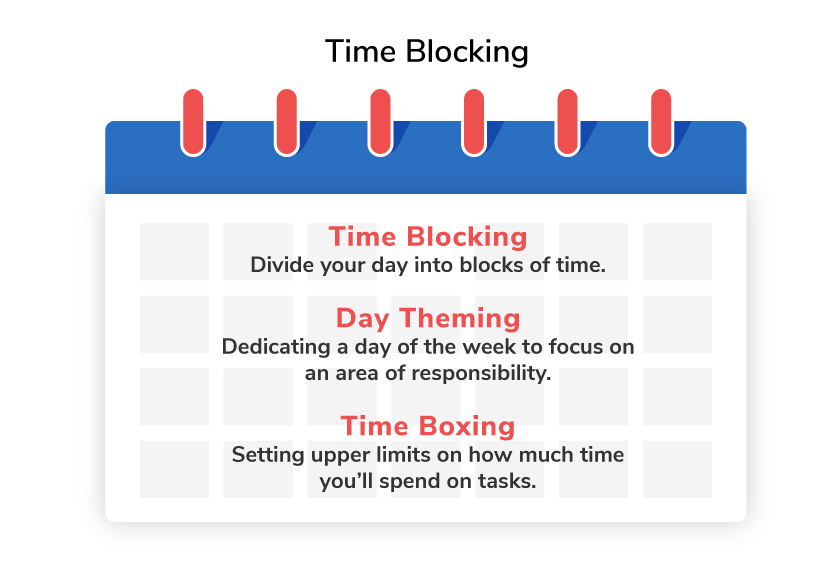
How to use:
In preparation to use this technique, make sure you group your tasks into common areas, prioritize categories and try to get an idea of what’s coming in the upcoming week.
- Time Blocking – Here you divide your day into blocks of time to focus on a group of tasks based on the priority.
- Day Theming – Dedicating a day of the week to focus on an area of responsibility like – Every Friday I will prepare for my certification
- Time Boxing – Setting upper limits on how much time you’ll spend on tasks or group of tasks helps you cross off the tasks.
Tools to use:
Outlook or Google Calendar
